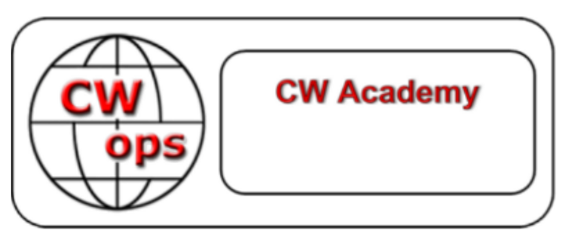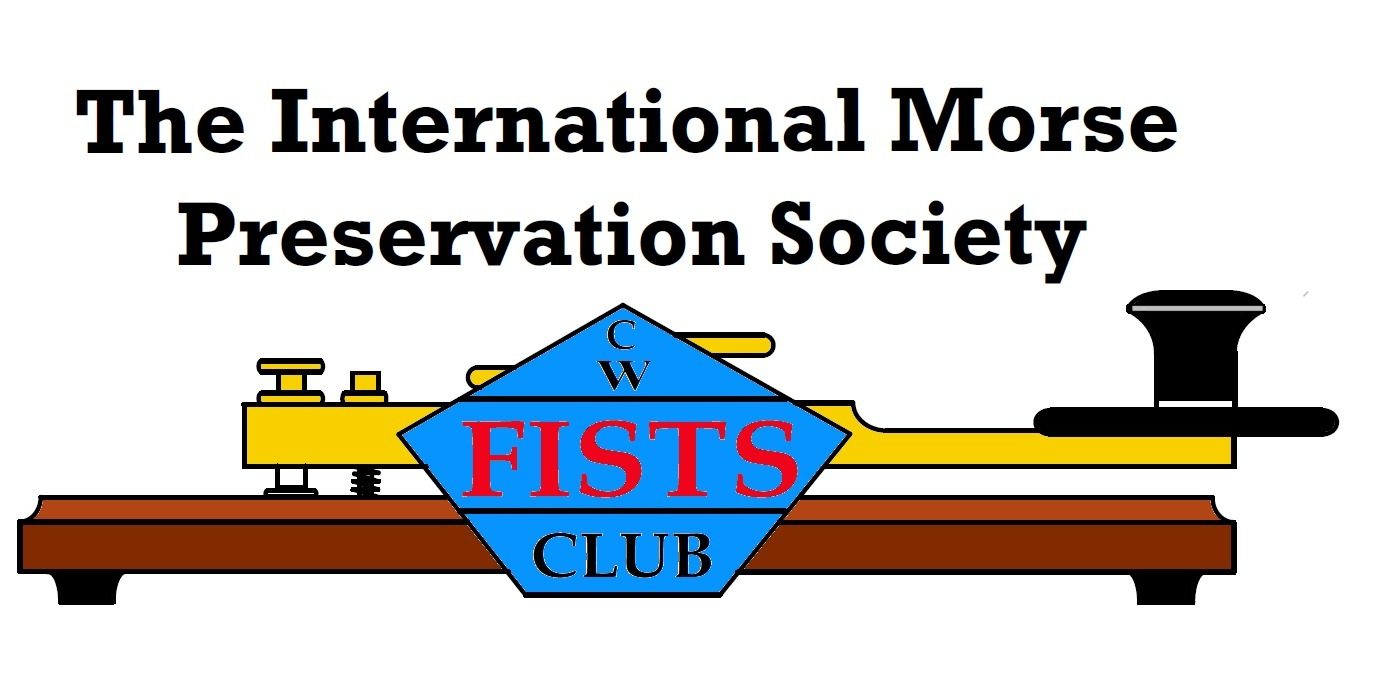So, you want to learn Morse Code…
There are a number of methods you can use to learn the code. Many people will recount their days of learning from tapes at an agonising 5wpm… or 10wpm. With the benefit of time and experience, the FISTS committee provides the following pointers which we hope will be of use.
FISTS Down Under is fortunate to have some Morse Code operators who have 30+ years of experience, both as amateurs and also as professionals. We have scoured the internet and looked at various methods and tools for learning the code. Whilst everyone is different and some respond better to one learning method than others, we believe the following to be one of the best approaches you can take to learning Morse Code.

The CW Ops club offers CW Academy, an eight week intensive course. CW Academy have trained thousands of new operators and their techniques and regime are proven. If you really want to get results in a short period of time and respond well to a structured learning environment, CW Academy is for you. To learn more visit:
https://cwops.org/cw-academy/
This approach also works if you are looking to improve your copy accuracy or speed.
If you choose to go it alone, you must commit to a regular practice regime. Learning Morse Code is like learning a foreign language, and if you approach it with the same discipline you will have the highest likelihood of success.
Next, use a method that is proven. We suggest you use the Farnsworth (or Koch) Method.
“The Koch method is based on exposing the student to full-speed Morse from day one. The first lesson starts with just two characters, played in full speed. The student must “copy” them (i.e. writing them down or typing them, like in this page). Once 90% of the characters are correctly “copied”, the student can go move to the next lesson, where just one more character is added.”
Ref: https://stendec.io/morse/koch.html
To clarify, the characters are sent at your desired target speed (e.g. 20 wpm) but inter-character spacing slows the overall rate down to your learning speed (maybe 8 wpm).
Take the time to watch the following presentation by Ray Burlingame-Goff, G4FON
We suggest you start with a character speed of no less than 18-20WPM. As Ray recommends, start with the character speed you want to be able to copy.
Ray’s key points:
- Learning Morse code is like learning a foreign language
- Learn at the speed you want copy – you want to hear and understand the code, not check a virtual lookup-table in your mind
- Establish a practice regime and stick to it
- Install audio files on your phone and listen to the code whenever you can; don’t underestimate the power of sub-conscious learning
- Practice, practice, practice
There are other online tools you can use:
https://stendec.io/morse/koch.html
The iPhone app “Koch Trainer” (search in the App Store) is also recommended as it follows the same method.
Android has a great app called “Ditto CW” which is also highly recommended.
The process we recommend is:
- Commit to a regular training regime – a minimum of 30-minute daily sessions for at least 5 days a week; add another 15-minute daily session if you really want to see progress
- Find an accountability buddy to meet on a regular basis who can assess your progress and provide feedback
- Watch the presentation by Ray G4FON. https://youtu.be/jBmuoLUV1LM
- Download the G4FON Training software. http://www.g4fon.net/
- Install audio files (or the app) on your phone so you can listen when in the car, out for a walk or in the garden (don’t underestimate the power of subconscious learning)
- Spend some time in the CW segments of the bands and start to listen to live signals. You’ll be surprised how quickly you start copying the basics of a QSO, and this will spur you on.
Ultimately, you will have the greatest chance of success if you choose the right learning techniques and practice regularly.
And practice, practice, practice.
Morse Code Buddies
FISTS Down Under offers an accountability Buddy Program. Our volunteers will meet with a CW learner at agreed intervals (say once a fortnight or even weekly) for 15-20 minutes. The meeting can be conducted via whatever means both parties are happy with… on-air, Zoom, phone, in-person. Buddies can even help by being available for QSOs to help you whilst you’re on your “L” plates, or to help build confidence once you get on-air.
If you are an experienced CW operator and are willing to be an Morse Code Buddy please send us an email. Your role will be to help the learner stay on course, offer support and encouragement and maybe even offer some on-air practice sessions. It’s very much up to the two parties to decide what will work best for them.
We have four volunteers who are willing to assist newcomers (and older hands) learn and improve their code. You can reach out direct to these gents or send an email to the secretary:
David VK2JDR
Michael VK2CCW
Chris VK3QB
Graeme VK5GG
If you are learning the code and are looking for some one-on-one support, send us an email. Even if it’s nothing more than a friendly buddy to have QSOs with at your speed.
Use of Technology
Like so many facets of technology and life, progress has been made in how we send and receive Morse Code. Computers are a game changer. They make learning the code so much easier, whether it is on your home PC or mobile phone.
The same goes for sending the code. Many still regard the age-old skill of hand sending using a straight key, bug or cootie to be a worthwhile endeavour; indeed, in the 21st century it is a skill practiced only by amateur radio enthusiasts, and FISTS promotes straight key sending.
However, many Morse Code enthusiasts use paddles and electronic keyers to send the code. Paddles still require considerable skill and rhythm but allow the operator to send at faster speeds for sustained periods. Others augment paddles with keyboards, which are especially useful in contests or DX-peditions. For some, mastering a key or paddle has proven too difficult (sometimes for medical reasons), but they still have a passion for the Code and use computers to send.
No technology beats your brain when it comes to receiving Morse Code. By all means, use decoders as a tool whilst learning and to monitor the bands, but every operator eventually learns that nothing beats the human brain to copy CW in difficult conditions.
Learn CW Online
Fabian Kurz DJ1YFK provides online Morse training via his website http://lcwo.net.
You listen to Morse and then type in what you hear and are scored. A big advantage is that the only software you need is the Adobe Flash Player, which is already installed on most computers. Various features are included such as the Koch Method for newcomers.
Automated Morse Transmissions
AR NSW operates a CW beacon for Morse Code training on 3.699MHz.
The automated Morse practice transmission operates using the call sign VK2WI in the 80 metre band on 3.699MHz. This also serves as a band condition indicator. Transmit power is 35 watts into a half wave dipole, 10 metres high.
The content of the transmissions is generated by a programmable controller. Originally this unit had storage of 1100 words which lasted a bit over 2 hours. This has now been extended to over 3700 words which will take almost 8 hours to cycle through allowing more variation in the transmissions. Transmission speeds also are cycled through to give listeners a variety of different combinations of speed and text.

